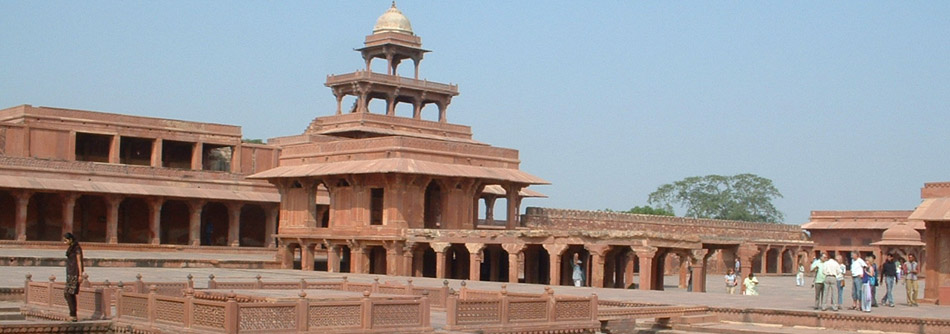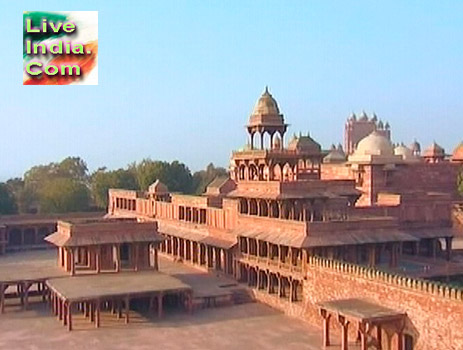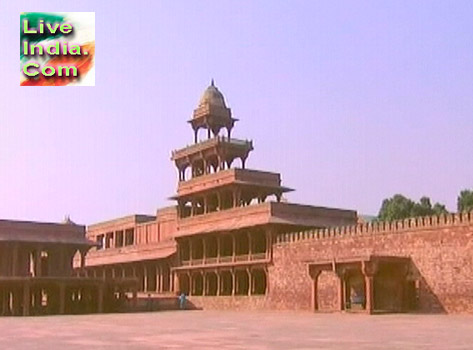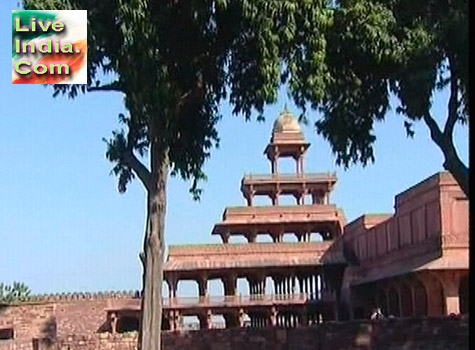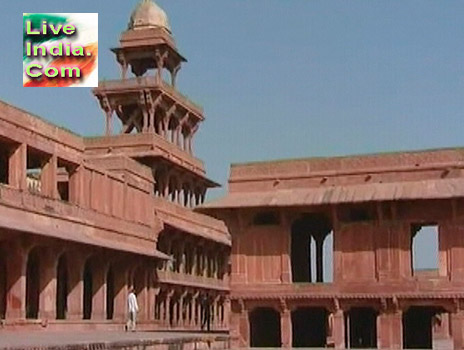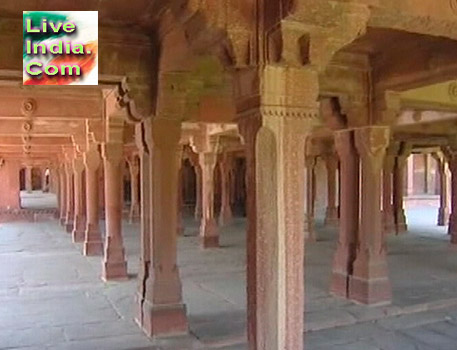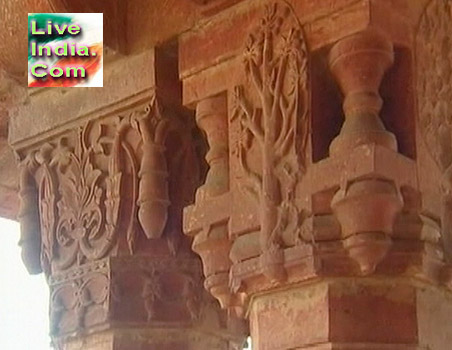| Panch
Mahal Fatehpur Sikri
Fatehpur Siri might have
been abandoned in less than 15 years from the day it was constructed, it
has left many heritages to ponder upon and appreciate. Most of these monuments
are living examples of Indo-Islamic architectural blend in India. Panch
Mahal is one of them. Panch Mahal is basically a five-storied structure
that can easily pass as an architectural marvel. Panch Mahal also signifies
the undiluted imprint that Buddhism has left on the Indian psyche. This
is proved by the fact that Panch Mahal is built on the Buddhist architectural
style.
|
|
Panch Mahal, a five storeyed
pavilion, stands on the western line of the courtyard. This is the badgir,
the Persian wind tower for ladies of the harem. The jail screens between
the 176 differently carved pillars have disappeared. Once these screens
provided purdah (cover) to queens and princess on the top terraces enjoying
the cool breezes and watching splendid views of Sikri fortifications and
the town nestling at the foot of the ridge. In the courtyard Akbar played
pachisi (checker board) with dancing girls as live pieces.
Built on the pattern of
a Buddhist Temple, Panch Mahal was basically a pleasure palace of emperor
Akbar. He primarily used it for relaxation and entertainment purpose. The
structure has been so designed that each story is pillared and is smaller
than the other as you move upwards. While no less than 84 columns support
the ground floor, the uppermost domed floor has only 4 columns. The whole
structure is very airy and was styled to give respite from the scorching
summers of Agra. |
Panch Mahal stands close
to the Zeenana quarters or Harem and that consolidates the fact that it
acted as a pleasure palace. The pillars that originally had Jaalis between
them support the whole structure. The women of the royal household and
ladies of the harem originally used the pavilion and that is why Jaalis
have been used. The pavilion gives a majestic view of the fort that lays
on its left. |
